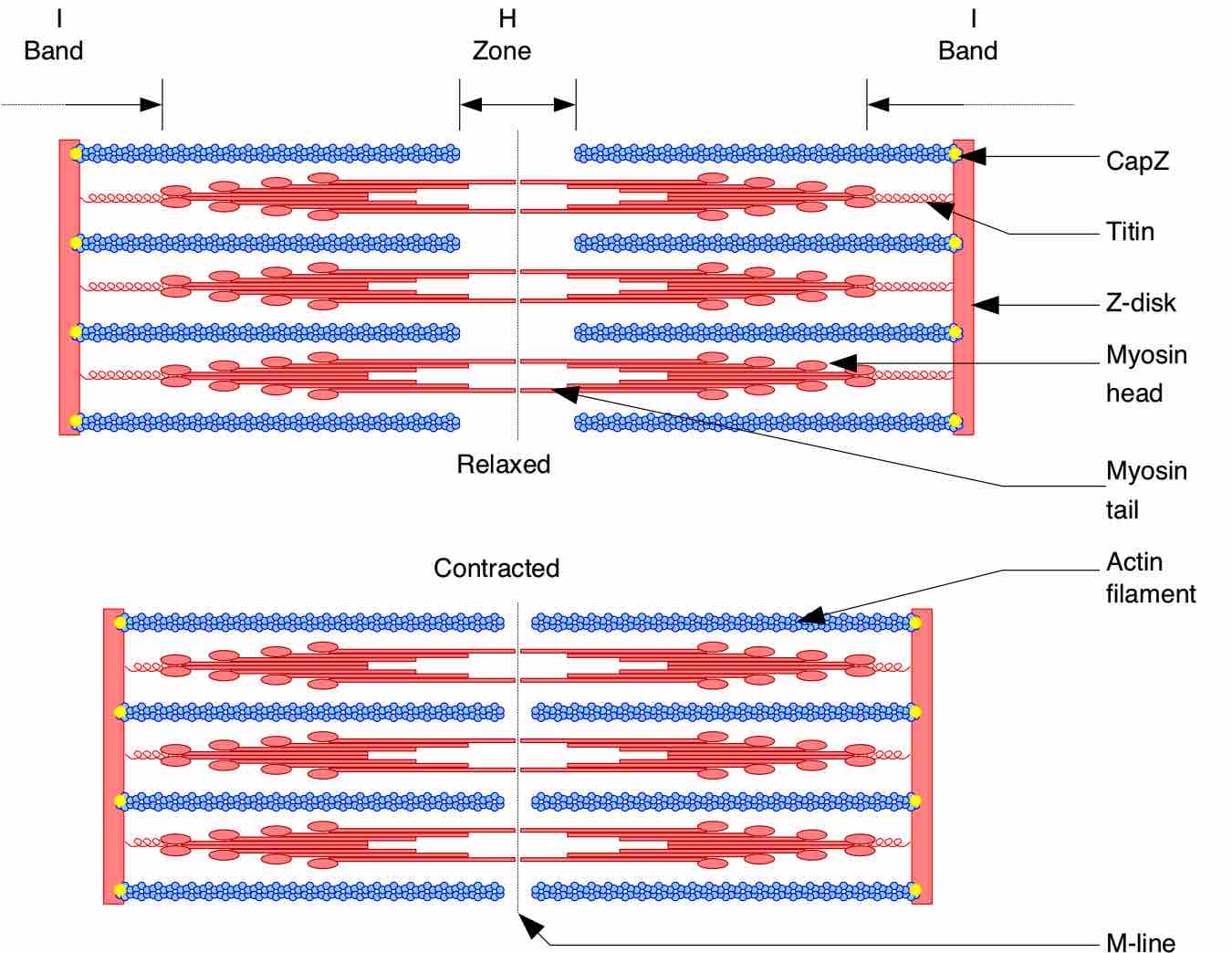Even when at rest, muscle fibers are at least partially contracted, possessing a small degree of tension which is termed muscle tone or tonus. Muscle tone is controlled by neuronal impulses and influenced by receptors found in the muscle and tendons.
This influence leads to the generation of reflexes in the spinal cord, such as the immediately obvious knee jerk reaction but also including key functions such as the posture maintenance and proper digestive system function..

Sliding Filament Model of Contraction
Muscle fibers in relaxed and contracted positions. Muscle tone ensures that even when at rest the muscle is at least partially contracted.
Control of Muscle Tone
The main regulator of muscle tone is the muscle spindle, a small sensory unit that is closely associated with and lies parallel to a muscle. Connecting to the endomysium of a muscle fiber, muscle spindles are composed of nuclear bag fibers and nuclear chain fibers. Both are similar to muscle fibers in that they contain actin and myosin myofilaments that allow them to stretch with the muscle. However, unlike skeletal muscle fibers where the nuclei are spread out and located at the periphery of the cell, in nuclear bag and nuclear chain fibers the nuclei are located in a central region which is enlarged in nuclear bag fibers.
Both cells of the muscle spindle contain sensory neurons. When stretched, muscle spindles become activated, triggering impulses to the spinal cord that can generate an immediate reflex. Spindles can also trigger impulses to the cerebral cortex providing information about the degree of stretch within the muscle.
To maintain tone, spindles also operate a feedback loop by directly triggering motor neurons linked to their associated muscles. If tone decreases and the muscle stretches the spindle, an impulse results in a muscle contraction. With this contraction, the spindle is no longer stretched.
A similar system is found in the tendons attaching muscle to bone. Distinct stretch receptors called golgi tendon organs assess the level of stretch within the tendon. The sensitivity of the golgi tendon organ is significantly less than that of the spindle, so it is thought they exist to prevent damage rather than control muscle tone.
Smooth and Cardiac Muscles
Smooth and cardiac muscles do not have specialized muscle spindles. Tone is maintained through autonomous feedback from the muscle fibers, neurons, and associated tissues.